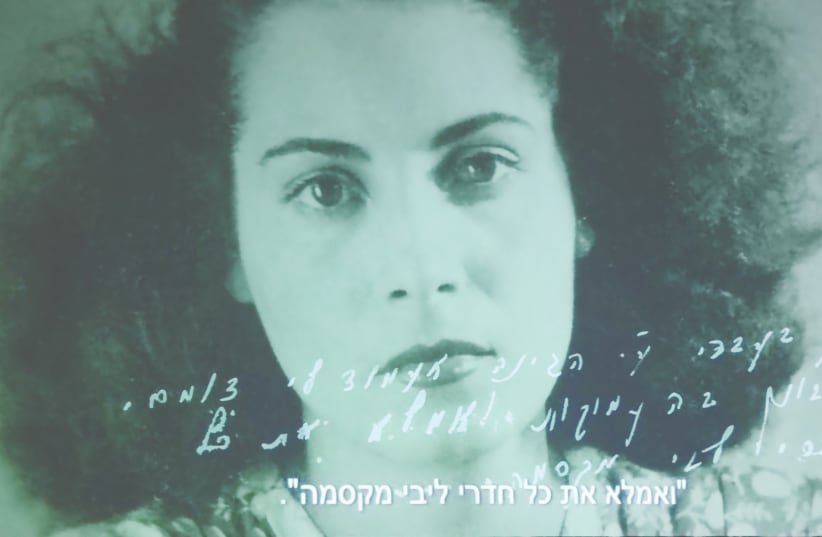15 years after her passing, the queen of Israeli music, Shoshana Damari, can still captivate a crowd.
Queen Shoshana, a documentary exploring Damari’s life and career, brought the larger-than-life diva back onto the big screen, accompanied by the Jerusalem Symphony Orchestra at the National Library’s Docu.Text film festival on Sunday evening.
Although Damari passed away in 2006, Queen Shoshana managed to convince those gathered that she was there, performing in front of the National Library and telling her story with all its ups and downs to the crowd gathered. For the nearly two hours of the film, the audience was entirely captivated by Damari’s presence on the screen and the symphony accompanying her.
The film explored all parts of Damari’s life, from her childhood immigration from Yemen to Mandatory Palestine to her rise to stardom with the hit “Kalaniyot” (Anemones) by Moshe Vilenski. Alongside the focus on her career, the film discussed the hardships the intense career placed on her family life and the ways that she, her husband and her daughter learned to stay together despite the pressure.
“I am a hard woman, that means that I have superhuman powers,” said Damari in a clip featured throughout the film.
The Jerusalem Symphony Orchestra, the orchestra with which Damari began her career, added an additional layer of richness to the film, with the music drawing the story out of the screen and into the crowd.
While the first lady of Israeli music had her ups and downs, the Queen Shoshana retained her stateliness throughout her life. In the film, Damari could be seen in her later years returning to the stage with Israeli performer Idan Raichel, standing tall despite being just three and a half feet tall and commanding the attention of crowds even in her 80s.
As the film ended and the credits rolled with Damari’s voice singing in the background, the crowd slowly returned to the present, giving the film, the orchestra and, of course, the queen herself, a strong round of applause.
After the film, Kobi Farag, one of the creators of the film, explained that Queen Shoshana was the product of four years of work. Morris Ben-Mayor, co-creator of the film, added that while the film was originally meant to be a short piece based on interviews of those close to Damari, “a miracle occurred” and they were provided with Damari’s estate.
“It was a really odd feeling. On the one hand it was a great joy. On the other hand, we felt as if we were entering some territory that we needed to walk through very gently, with a lot of respect, and we had to draw a line that would be forbidden to cross,” said Ben-Mayor.
Ruty Rubinshtein, administrator for culture of the Docu.Text festival, explained during the event that the National Library is a natural location for a documentary festival as the library and its resources are an essential part of the documentary creation process.
Farag told Rubinshtein that while he was searching through the library for material for the film, a worker he didn’t know approached him with tapes of Vilensky, in which he described his work and relationship with Damari.
“Like Vilensky’s tapes, that waited in silence for many years, so too many other treasures await in the National Library,” said Farag. “This is the essence of the Library. It allows creators to discover the different and varied materials and such deepens the cultural creation, gives its more layers and allows for the cultural and historical stories to be told anew.”
